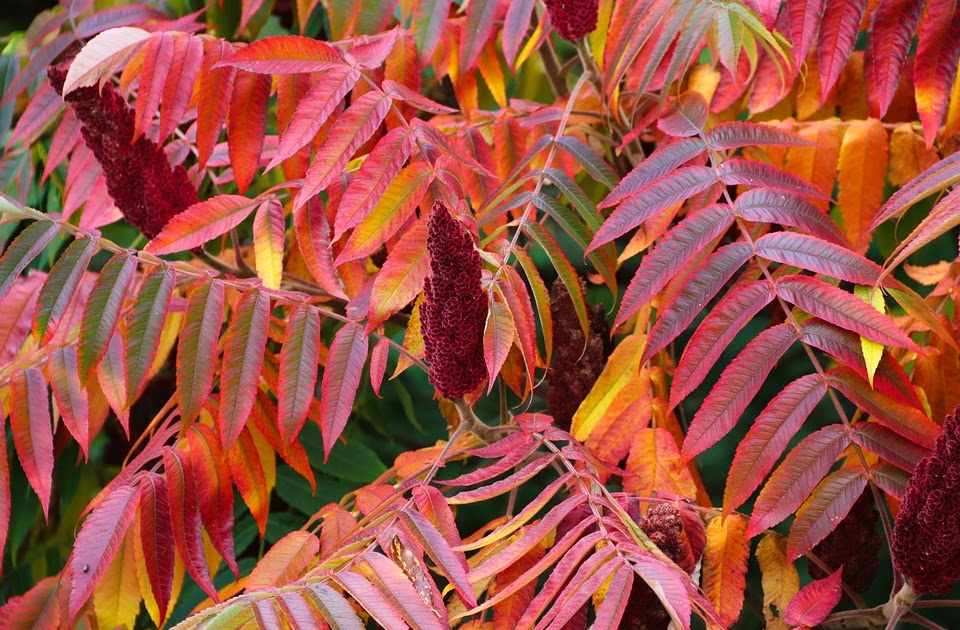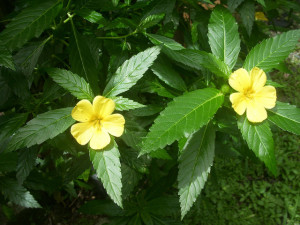SumacThe Essential Herbal Magazine from the Nov/Dec 2014 issue
As I write this all of the leaves are off the trees and the
beautiful flowers of the handsome native sumacs really catch your eye along our
Pennsylvania roadsides. Sumac is
pronounced Shoomak or Sumach according to Mr Webster. This stately tree ornamented with huge
velvety and showy wildflowers can be enjoyed in a variety of ways indoors and
out. Native plants that have been growing here for thousands of
years are tough. They have built in
durability, disease and insect resistance.
Sumacs also have the ability to survive roadside dust and air
pollution. Grown in even moderately good
conditions they will be even more beautiful than in the wild. Not often recommended for gardens anymore, I
had to go back as far as the 1972 US Dept Agriculture “Landscape for Living”
Yearbook to find it written as a landscape feature for poor soil with a wide
range of adaptability. Appropriate for
zones 5-9. I have to warn you to beware
as it can become a bit of a weed tree.
Plant of poor dry soil, sandy waste places, rocky hillsides,
on the fringes of weeds and clearings, it is easily grown by seed, popping up
in sunny spots along every new cut in the roads. It is particularly valuable as a nurse tree,
appearing soon after fires. Fast growing
Sumac rebuilds the soil and protects other seedling forests trees, which will
follow and eventually take over.
I have noticed many of the books in my library shy away from
talking about sumac. Why? Most authors seem to avoid sumac automatically
assuming it is “poison sumac” and dreadful mistakes will be made. Although only the white berried forms Rhus radicans
or poison ivy, and Rhus vernix, which
grows in swampy situations, are poisonous, all sumacs are maligned by this
reputation. This one unattractive cousin
of the family with droopy white berries is usually found in inaccessible places
and it is virtually impossible to confuse the good plant with the bad. Regardless both seem to be addressed as “poisonsumac”
as if it were only one word and one species.
There are many species of Rhus and every one of the red
berried spires whether it is hot pink or maroon is edible and usable in
bouquets both fresh and dried! Gather it to create wreaths, dried bouquets or
boil the berries to make a tart pink lemonade or to use as a dye bath for
woolens or linens. Use it as a home
remedy or season Indian and Middle Eastern Foods with the crushed red berries.
The genus Rhus (family Anacardiaceae) is a rugged one with
shrubs and trees scattered over the world, growing everywhere but the Polar
Regions. Rhus, the Greek word for Sumac,
includes poison ivy, the noxious vine as well as Rhus Cotinus, our lovely smoke
tree with showy pink-gray clouds of “smoke” appearing in the old fashioned
garden in the fall. It all includes all
of the red-berried sumacs which are guaranteed safe to pick and eat. The two dominant varities are the satiny
smooth Rhus glabra and the staghorn or hairy Rhus typhinum, both grow to 18-20
feet in height. The soft wooly texture of
the flowers is due to the miniscule hairs covering each berry. Break off the flowers early in the season for
the best color and flavor.
Our American Indians valued this plant using it as a gargle
for sore throats, as an antiseptic poultice for sounds, as a tonic and as an
astringent – it’s most valuable property. It is recorded that they chewed the
root for mouth sores and a dressing of fresh leaves and berries relieves the
itch of its cousin poison ivy.To make the pretty pink Lemonade, wash then pound several
heads of red sumac berries in a large enamel pot of water. Boil for 10 minutes, then strain through a
cloth to remove the hairs. Dilute and
sweeten to taste and serve at once as it doesn’t keep well. If you collect and dry the berries while
still velvety, this pleasant citrusy drink can be made at any time all winter
long.
Additionally it was
used as a dye plant for fibers, hair and skin.
Used as an ingredient in Za’tar Spice, this amazing plant has a long
international history of uses. And no,
it’s not poisonous.
Susanna Reppert Brill of The Rosemary House, Mechanicsburg,
PA enjoys talking about herbs and riding a good zip line, but not necessarily
at the same time.


